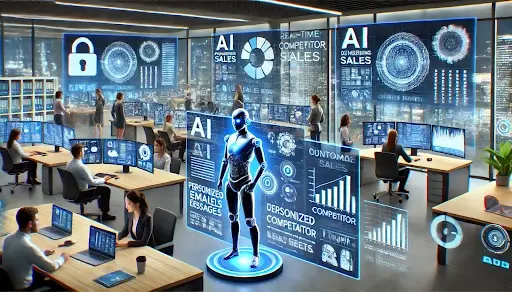Do GenAI Solutions “Hallucinate”? Let’s Stop Calling It That
For the love of green beans and other good food everywhere, can we please stop using the term "hallucination" when talking about Generative AI? It’s...
In the race to adopt generative AI, most organizations are still feeling their way forward. What separates the leaders from the rest isn’t access to better tools, but a fundamentally different mindset. GenAI is not just a technology; it is a capability. And the few organizations that understand this are already changing how they operate, compete, and grow.
To learn more about how to develop this capability, join me for a session on “Driving Organizational Transformation: View AI as a Capability, not a Technology” at our GAI World Conference, Sep 29-30, Hynes Convention Centre, Boston, MA.

Across industries, executives are making bold claims about how generative AI will reshape their businesses. But beneath the vision decks and pilot projects, a more sobering picture is emerging. The majority of companies are still struggling to scale. Their GenAI efforts remain fragmented, scattered across business units, managed with little coordination, and delivering modest results. Most firms are stuck in islands.
Meanwhile, a small set of firms have turned a corner. They are not just experimenting with AI; they are embedding it into strategy, operating models, and governance. And they are accelerating away from the pack. These differences are not just tactical. They reflect a deeper divide in how organizations view AI itself: as a technology to be bought, or a capability to be grown.
Treating GenAI as a technology is seductive. It implies speed, simplicity, and scalability. But real impact doesn’t come from installing tools, it comes from transforming how people work. GenAI is as much about human judgment as machine intelligence. It is a capability that must be built through hands-on usage, experimentation, and learning by doing.
This idea, capability before transformation, is fundamental. You cannot redesign what you cannot describe. You cannot govern what you don’t understand. Without visual literacy and practical experience, most redesign efforts will misfire. A capability is grown. A technology is bought. GenAI is both, but it must start with the former.
This distinction is becoming visible in the market. A bimodal distribution is forming. On one side are the orchestrators, companies that are consolidating AI efforts, standing up shared infrastructure, and embedding governance into their operating rhythms. On the other side are the toe dippers and island builders, firms that continue to explore without a plan to scale.
The consequences are real. Productivity curves are diverging. Governance models are hardening. Talent flywheels are forming. The more advanced firms move ahead, the harder it becomes for others to catch up. This isn’t just a maturity gap—it is a structural divergence.
This divergence is being amplified by a powerful shift in how work is executed. As services become software, the economics of knowledge work are being rewritten. Organizations that invest in orchestration—shared platforms, reusable components, and automation layers—are seeing a transformation in speed, cost, and complexity.
Instead of building one-off solutions, they are developing reusable workflows. Instead of high variable costs, they are pushing toward near-zero marginal cost for new tasks. This is the future of scaled AI: not dozens of pilots, but platformized services that learn, adapt, and improve.
Consider the case of a founder preparing to take his company public. Traditionally, preparing an S-1 filing is a weeks-long process with multiple rounds of SEC feedback. Instead, this founder took a different approach. He fed his draft S-1, along with historical SEC comments from peer companies, into a GenAI model. The system flagged likely areas of concern and suggested changes before submission.
The result? The SEC returned only 17 comments, compared to the typical 40 to 50, and the process took just four days. This is what happens when speed, quality, and cost move together.
Business leaders have long accepted the rule of three: faster, better, cheaper, and pick two. With GenAI, that trade-off no longer applies. If you treat AI as a capability and reach orchestrator maturity, you can have all three.
You can move faster without sacrificing accuracy. You can improve quality while lowering costs. And you can do it across increasingly complex processes. But this only becomes possible once the foundation is in place; platforms, governance, and capability, embedded across the enterprise.
Firms that reach this stage are not just more efficient. They operate on a fundamentally different cost curve. They redesign with confidence. They measure what matters. And they learn faster than their competitors.

For the love of green beans and other good food everywhere, can we please stop using the term "hallucination" when talking about Generative AI? It’s...
-1.png)
GenAI is having a strong impact across all fields. Enterprises are also using these advanced AI applications as a tool to ease workload, improve...

GAI Insights is a forward-thinking company at the forefront of AI integration. This brand has been transforming the landscape of sales productivity....
Trusted by companies and vendors around the globe - we help you cut through the noise and stay informed so you can unlock the transformative power of GenAI .
Join us at this year's Generative AI World! Hear from enterprise AI leaders who are achieving meaningful ROI with their GenAI initiatives and connect in-person with the GAI Insights members community including C-suite executives, enterprise AI leaders, investors, and startup founders around the world